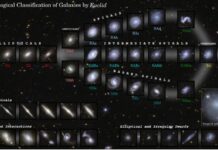A remarkably preserved clay figurine, discovered in Israel, provides unprecedented insight into the beliefs and artistic expression of the Natufian people who lived 12,000 years ago. The small sculpture depicts a human figure with a bird positioned in a way that suggests an intimate act, raising questions about early human perceptions of sexuality, spirituality, and the relationship between humans and animals.
The Discovery and Its Significance
Archaeologists unearthed the figurine at Nahal Ein Gev II, an archaeological site near the Sea of Galilee. The piece, crafted from a single block of clay and later fragmented into three pieces, measures just under four centimeters tall. What makes it exceptional is the clarity of the depiction: a human form with a bird resting on its back in a suggestive position. This is not merely an artistic representation; it’s the earliest known depiction of a human figure in southwestern Asia, predating established agricultural societies.
The Natufians were a sedentary hunter-gatherer culture who occupied present-day Israel, Palestine, Jordan, Lebanon, and Syria between 15,000 and 11,500 years ago. Their settlements, though not fully agricultural, demonstrate early signs of permanent habitation. The discovery of this figurine suggests that their culture was far more complex than previously understood.
What the Figurine Depicts
The sculpture shows a human figure, likely female given the incised triangular area representing the pubic region and symmetrical oval imprints near the face suggesting breasts. Resting on the human’s back is a bird, identified by animal bones found at the site as likely a goose. The bird’s position, with wings spread backward, suggests an act of mating.
While some interpretations propose the figurine depicts a hunter transporting a slain bird, the researchers favor a mythological explanation: the representation of a goose mating with a squatting female. Such imagery of human-animal unions is not uncommon in later myths, and this figurine provides the earliest known example.
Implications for Understanding Early Beliefs
The figurine challenges assumptions about the spiritual and cultural landscape of the pre-Neolithic period. The Natufians, living before the advent of settled agriculture, were already engaging with complex symbolic representations. The act of creating this sculpture suggests an emerging desire to depict female imagery, potentially linked to women’s growing role in spiritual practices.
Furthermore, a partial fingerprint found on the figurine may indicate that it was sculpted by a woman. Based on ridge density comparisons with modern fingerprints, the imprint suggests female authorship, though this remains tentative.
The Broader Context
The figurine was discovered in an area of the site used for burial, alongside other unique deposits, including a child burial and a cache of human teeth. This suggests the location held ritual significance. The discovery comes at a time when our understanding of pre-Neolithic cultures is rapidly evolving.
The Natufians were on the cusp of the Neolithic revolution, the transition to settled agriculture and domestication. This figurine suggests that, even before this shift, they were already creating complex imagery and potentially expressing animistic beliefs. It is a window into a world where the boundaries between humans and animals were more fluid, and where the spiritual realm was actively represented in art.
The figurine is not merely an artifact; it is a testament to the enduring human fascination with the natural world and the mysteries of creation. It challenges us to reconsider our assumptions about the origins of belief and the evolution of human consciousness
























